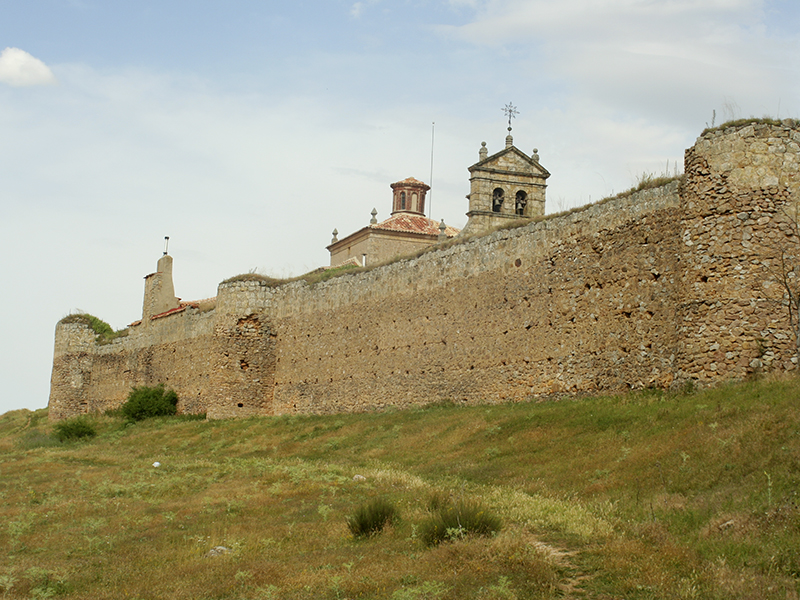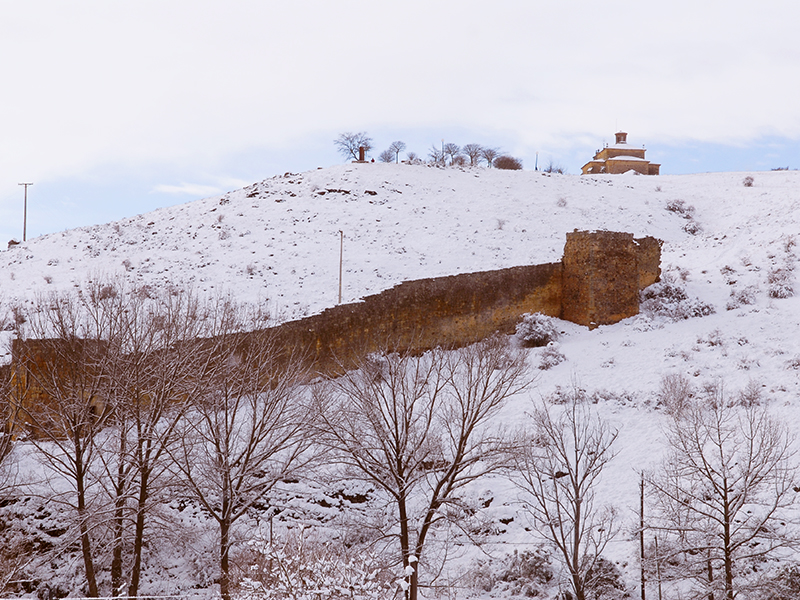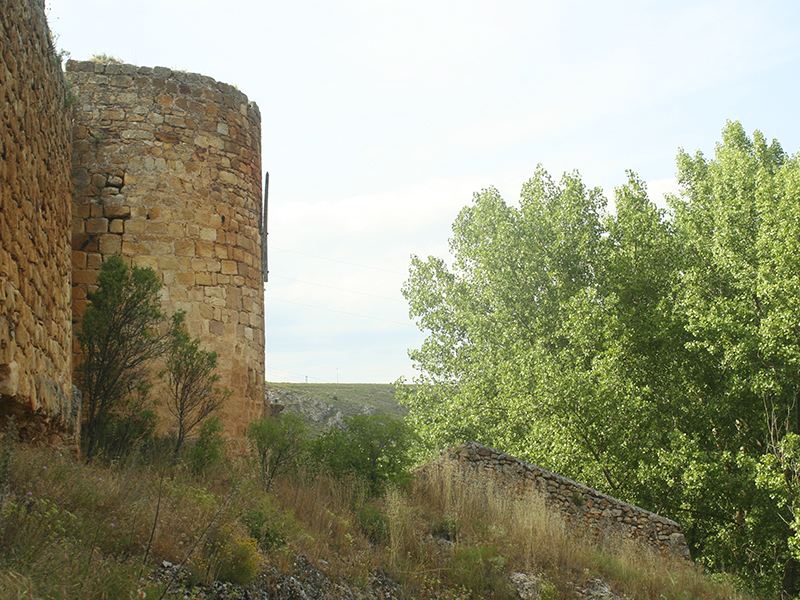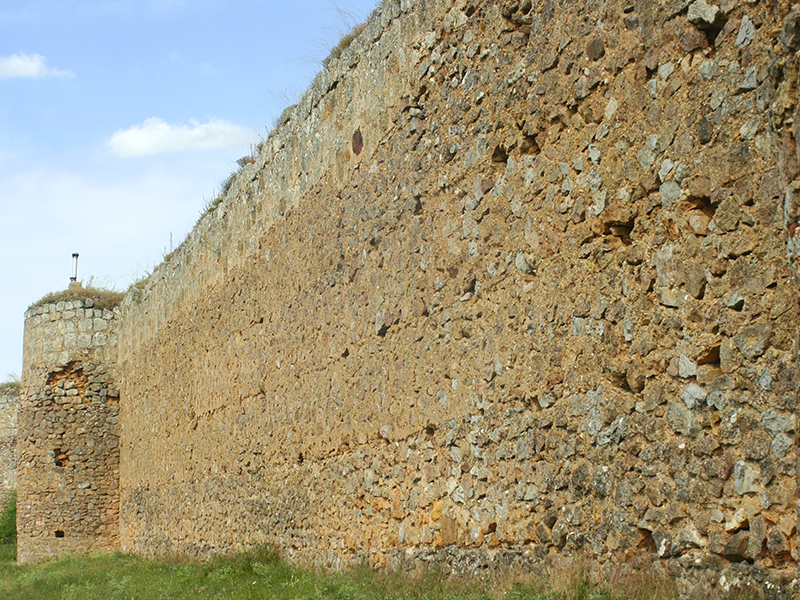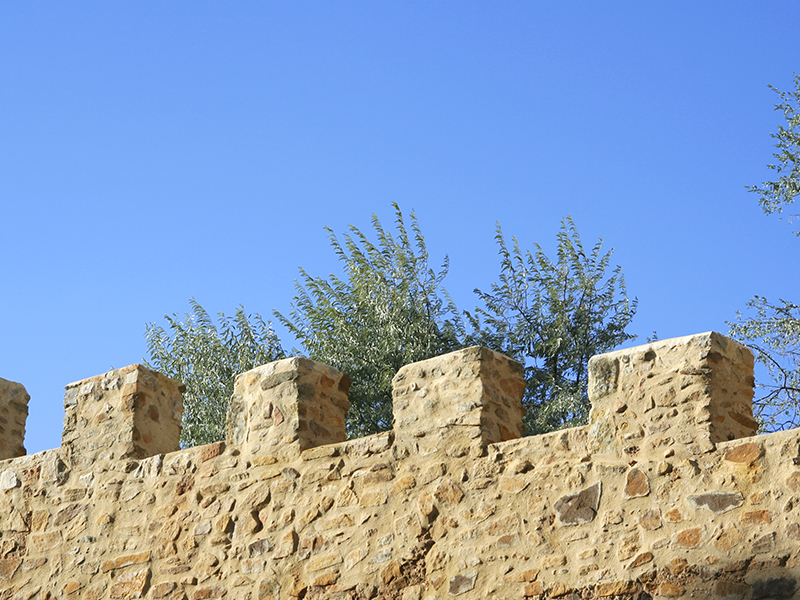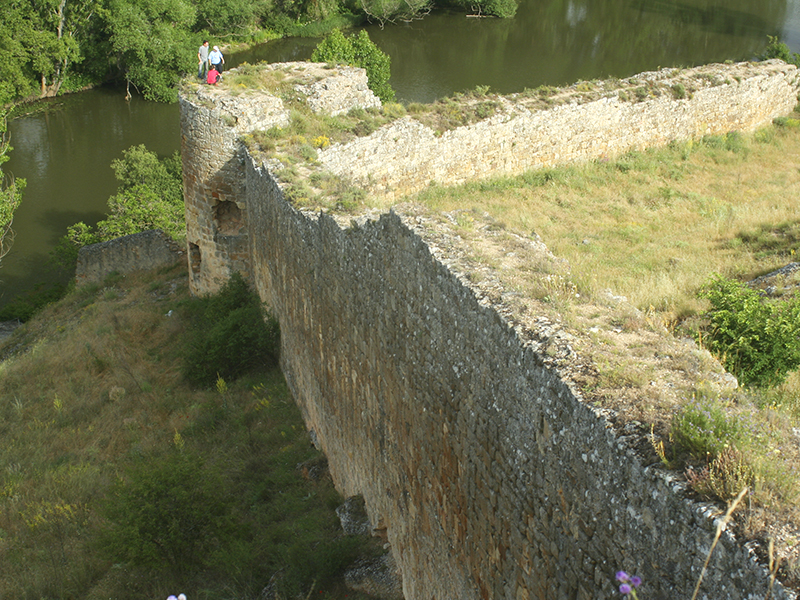MEDIEVAL WALLS
A FOUR KILOMETERS WALL
HISTORY
The time from which the city, then the town, was fortified with the construction of a wall is associated with the attack of Fort Sancho VII of Navarre in the early 13th century. Sancho IV of Castile at the end of that century decided to build the outer wall enclosure. During the War of Independence General Jose Joaquin Duran ordered its demolition, being demolished on December 30th, 1812, the same thing as the Castle and up to this day only a few sections have been preserved.
DESCRIPTION
The wall had a length of 4,100 meters (it is said that the dimensions of the wall of Soria coincided with the wall of the Old City of Jerusalem) housing a nearby 100 hectares surface.
It was built of masonry except reinforcements in corners where stone blocks were used.
Six doors allowed the access to the interior of Soria, the Bridge on the river or "of Navarra" which was destroyed in mid-nineteenth century; of Valobos, near the cemetery in the south; Rabanera at the beginning of the Caballeros street and latest to be demolished in 1887; Postigo in the completion of Collado Street, at the junction with the streets Puertas de Pro and Claustrilla also demolished in the second half of the 19th century; the Rosario in front of the church of Santo Domingo and finally Najera or Miron north at the intersection of Paseo del Miron with the current Logroño Road; at the end of Alberca street was the Portillo de Santa Clara, next to the convent of the same name.
Today there are two side doors: the Postiguillo of San Gines joined the ruins of the chapel with the same name and Postiguillo St. Augustine located annex to the ruins of the convent of San Agustin.
Currently parts of the medieval wall are preserved on the banks of River Duero, longitudinally Puertas de Pro Street on the rear of buildings (access by Aduana Vieja Street) and parkside Santa Clara.
As part of the project of valorization of this fortified area that for centuries marked the urban development of the city and a silent witness to many local historical events, there is specific signaling by beacons, directional signs and decorative plates on the floor along all that was the perimeter of the medieval walls of Soria.








